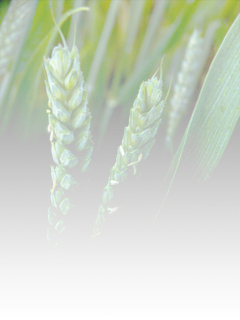Sod-based rotations and reduced-tillage systems for improved organic vegetable production systems
(Butler, Bates) |
||
The introduction of perennial forages (sod-based rotations) and reduced-tillage into organic vegetable production systems has potential to improve soil quality, increase N fertility, and decrease pressure from weeds and soil-borne plant pathogens. Research examining these issues in vegetable rotations has been limited. At the same time, research examining establishment and management of organic forages has also been extremely limited, especially in the Southeast. In this project, we began an examination of five organically-managed forage systems to evaluate organic forage establishment and management in the Southeast and feasibility of integration into sod-based, organic crop rotations. To better examine these rotations over the long-term, we established reduced-tillage cover crop-based vegetable production systems (organic and conventional) and tilled, plasticulture controls (organic and conventional) to allow for comparisons to sod-based rotations. Data collection includes forage productivity, soil quality in each system, and vegetable productivity, disease incidence, and weed pressure in reduced-tillage vegetable production systems as compared to plasticulture controls. Total forage yield for the 2011 season indicates that the most productive forage treatments were the annual mixture of wheat/crimson clover and sorghum-sudangrass and treatments which included red clover. The lowest yield was observed from the alfalfa monoculture, primarily due to the very low spring harvest caused by sclerotinia stem and crown rot. The yield compensation of the orchardgrass component of the alfalfa-orchardgrass mixture prevented the dramatic yield loss observed in the alfalfa monoculture. Results in 2012 were more favorable to the treatments containing alfalfa, due to higher drought resistance compared to red clover. By July 2011 harvests, percent of unsown species was generally quite low in all forage treatments, averaging less than 5% of dry matter. In general, there were few significant differences in yield of eggplant across treatments in 2011. Numerically, yields were slightly higher in reduced-tillage treatments (organic and conventional; 17 Mg ha-1) than conventional tillage plasticulture systems (organic and conventional; 15 Mg ha-1), but these differences were not significant. While total soil nitrogen (N) varied little among treatments, particulate organic matter N (POM-N) showed a greater response to management. Highest levels of POM-N were observed from the alfalfa monoculture and red clover/orchardgrass mixture and the lowest levels observed from conventional vegetable production (reduced-tillage and conventional tillage). Organic vegetable production systems generally had intermediate levels of POM-N. This initial research was in part funded by a UT AgResearch and Extension Innovation Grant in 2011. Work has also begun using soils from these plots to examine “Self-Protection of Organic Carbon in Soil Pores under Organic Agricultural Practices,” an effort funded by a grant from the National Science Foundation (Zhuang, McCarthy, Butler, Bates). Likewise, we have begun to examine the impact of free-living nitrogen fixing bacteria in organic cropping systems in these research plots, an effort funded by a UT AgResearch Innovation Grant in 2012 (Butler, Bates, Alexandre). | ||


